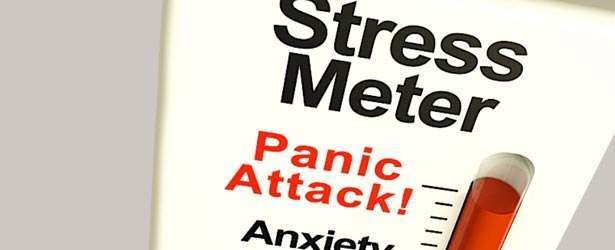
Anxiety Overview: A Look At Anxiety Disorders
 Everyone experiences feelings of stress every now and then. Stress can even be a positive response to some situations. This “flight or fight” response prepares the body to be alert and on edge when action is needed.
Everyone experiences feelings of stress every now and then. Stress can even be a positive response to some situations. This “flight or fight” response prepares the body to be alert and on edge when action is needed.
For example, if someone encounters an unfamiliar or threatening environment, he or she can be nervous, edgy, and anxious. This may allow that person to tackle whatever comes next. People who are anxious speaking in public or while taking an exam, rehearse or study to ensure they are equipped to take on the challenge. Stress also helps keep people safe in dangerous situations.
However, when excessive anxiety or fear prevents a person from living a normal, healthy life, it can become a problem. This can be a sign of an anxiety disorder. Fortunately, this is a very common condition which can be successfully treated.
Nearly 9% of Americans suffer from an anxiety disorder during some period of their lives. For a few, anxiety can be so debilitating they can’t leave their homes and are prevented from performing everyday tasks.
The term “anxiety” has been so overused recently that it’s at risk of losing its meaning. The words “anxiety” and “fear” have become nearly interchangeable. However, they’re actually two separate conditions. Anxiety describes multiple types of mental conditions characterized by an extreme amount of mental worry that appears for no reason. Fear, however, is an emotion that triggers anxiety.
What are the Different Types of Anxiety Disorders?
Anxiety disorders include a rather broad category of different medical conditions. Some of these conditions include:
- Panic disorders
- Post Traumatic Stress Disorder (PTSD)
- Obsessive Compulsive disorders
- Phobias
- Generalized Anxiety Disorder (GAD)
What are the Symptoms of an Anxiety Disorder?
There are lots of symptoms that a person may demonstrate if he or she has an anxiety disorder. Here is a list of some common anxiety symptoms (not all of them need to be present for a doctor to diagnose an anxiety disorder):
- Over the top worrying

- Unreasonable fear of things or circumstances
- Jumpiness/Inability to relax
- Repeated re-living of a prior traumatic experience
- Insomnia
- A compulsive need to repeat an action over and over again
- Shaking or trembling
- Muscle pain
- Perspiration/cold or clammy hands/light headed
- Hyperactive/Rapid heartbeat
- Exhaustion
- Dry, cotton mouth
- Tingling or numb extremities
- Stomach cramps/nausea/loose bowels/difficulty swallowing
- Hyperventilation
Generally, people who suffer from anxiety disorders are paranoid that they or their loved ones will be harmed or threatened in some way. They typically find it difficult to concentrate and are easily angered and impatient – regardless of the circumstance or habitual lateness.
While everyone experiences some of these symptoms at some point in their lives, it’s only a problem if they interfere with your daily life. If symptoms are too extreme for the situation that triggers them, it may be caused by an underlying anxiety disorder. You may want to explore options to treat the condition.
TOP 5
ANXIETYTreatments |
|||||
| AnxiClear | Exulin | Hapinex | MindSoothe | ReloraMax | |
|---|---|---|---|---|---|
| 1 | 2 | 3 | 4 | 5 | |
| Overall Rating | 99.50% | 87.30% | 82.10% | 76.80% | 72.80% |
| Performance* |





|





|





|





|





|
| Speed of Results* | Extremely Fast | Good | Good | Average | Average |
| Quality of Ingredients | Premium | Good | Good | Average | Unknown |
| Customer Satisfaction Evaluation | 99.40% | 85.30% | 80% | 74% | 70.30% |
| Safety Evaluation | Safe for Use | Safe for Use | Safe for Use | Safe for Use | Safe for Use |
| Customer Service Rating |





|





|





|





|





|
| Reorder Rate | Highest | Good | Average | Average | Average |
| Return Policy | Risk Free | Unopened | Unclear | Good | Risk Free |
| Success Rate* | 99.40% | 86.20% | 81% | 74.50% | 69% |

 Subscribe Now
Subscribe Now











